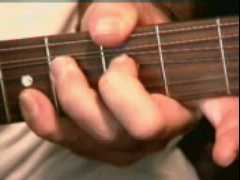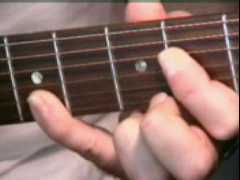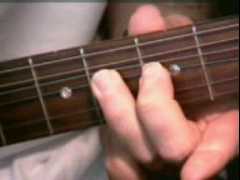Scroll through the lesson and click on notation/video/audio links to load the interactive players.
Please subscribe to get full access to all lessons for only $7.95/month PLUS 1 week free trial.

Riff Interactive lessons are
LESS expensive and
MORE interactive than alternatives!
More Info
|
|
| Lesson Subject:
Rolling Stones Style |
| What you learn:
Movable Scales & Licks |
| Michael: Michael Johnson |
Michael: This interactive lesson will
cover guitar licks in the style of Stones guitarists Keith Richards and Ron Wood. Keith is known for his stylistic rhythm pattern but also integrated a simple
but effective lead style. Ron Wood has a bluesy and almost country flavor to his
lead licks. Many of these lead patterns play off the Keith Richards rhythms you just learned, you can see how the rhythm and lead patterns interplay.
These licks and rhythms continue in the key of A. Here's a sample of what you'll learn:
Michael: Notice the nice lazy feel of the licks.
Here's the scale pattern we'll use:
Michael: Here's the A Major Pentatonic scale:
A, B, C#, E, F#. Do any of you know what scale the major pen comes from?
MB:
Major -4 & -7
Michael: Yes MB, that scale comes from the
A Major scale; A, B, C#, D, E, F#, G#. You drop the 4th and 7th note and that
gives you the A Major Pentatonic; A, B, C#, E, F#. You can [lay that scale over
the next progression.
Michael: Here's the A Major and A Major Pentatonic scale
patterns together.
Michael: Notice how the scales overlap.
John: So A major and A major pen have
interchangeability. Is this always true for playing in A?
Michael: Yes John, most the time. Here's the first lick:
Michael: This lick uses the pattern I gave
you earlier. Notice how you barre the notes of the chord. Here's a picture of
the bend.

Michael: Here's the same lick, both with a
different rhythm pattern.
Michael: You can move use movable scale
patterns using the major pentatonic scale. In this example you move from the A
Major Pentatonic, to D Major Pentatonic, and then to the E Major Pentatonic.
This pattern follows the I (A), IV (D), V (E) we have covered in other lessons.
Here's the scale patterns. The root notes are highlighted.
Michael: Now you can move that pattern or
lick up the neck to follow the progression. Here's the lick for the for the IV (D) using the same lick you played earlier in A (I). This should help show you where you can play these licks while following the progression.
See how the scales follow the chords.
MB:
I IV V Pattern
Michael: Yes MB, here's the lick for the D.
Michael: It's the same basic lick only moved to the 2nd scale pattern I sent.
Here's the lick in E Major Pentatonic.
lv8rdoc: Honky tonk woman sounding!
Michael: OK, now that you understand this
concept try using other licks as well, and then moving them to the I, IV V
positions like you did in the earlier example. Here's one lick variation you can
try.
Michael: This lick starts with a cool sounding A5 chords, here's
a picture of the fingering.


Michael: You can also use the chords I showed
in the previous lesson. Notice how the lick starts with the chord then the A Major pentatonic scale pattern and then to the A6.
Here is another lick variation you can try.
Michael: This lick sounds cool... it starts with the A chord, notes in the A Major
Pentatonic, and then uses Maj 3rd intervals on the 2nd and 3rd strings. Try to
move the licks to the different positions of the progression. Here's a sample of
me playing to the progression.
irene: Bends are hard to do, I don't understand 1/4 or 1/2.
Michael: They are Irene. You try to match
the pitch of the higher fret pitches by bending it up
to make subtle changes in the pitch. A 1/2 bend matches the pitch one half-step
higher on the fretboard, a full bend is 2 frets higher, etc. A 1/4 bend is the
pitch in between the 1/2 step bend. Use your 2nd and 3rd fingers to help with bending,
this gives your 3rd finger more support. Here's a picture:

Michael: I hope you understand the options
you can use when soloing over a I, IV, V progression. I will get more in-depth
using these concepts in the next lessons using the key of C. Check it out!
|
<< load notation from left
|
|
<< load audio from left
|
<< load audio from left
|